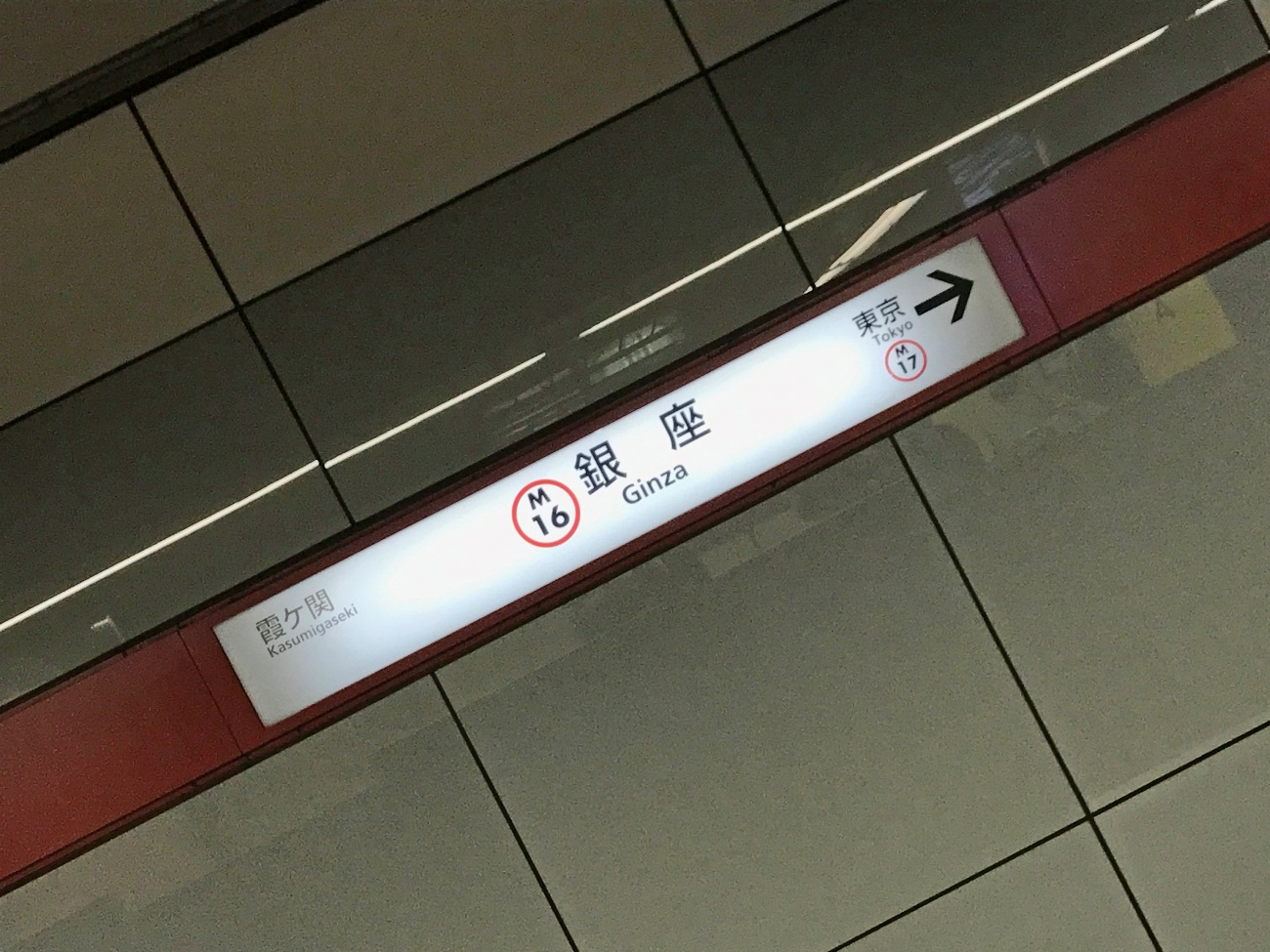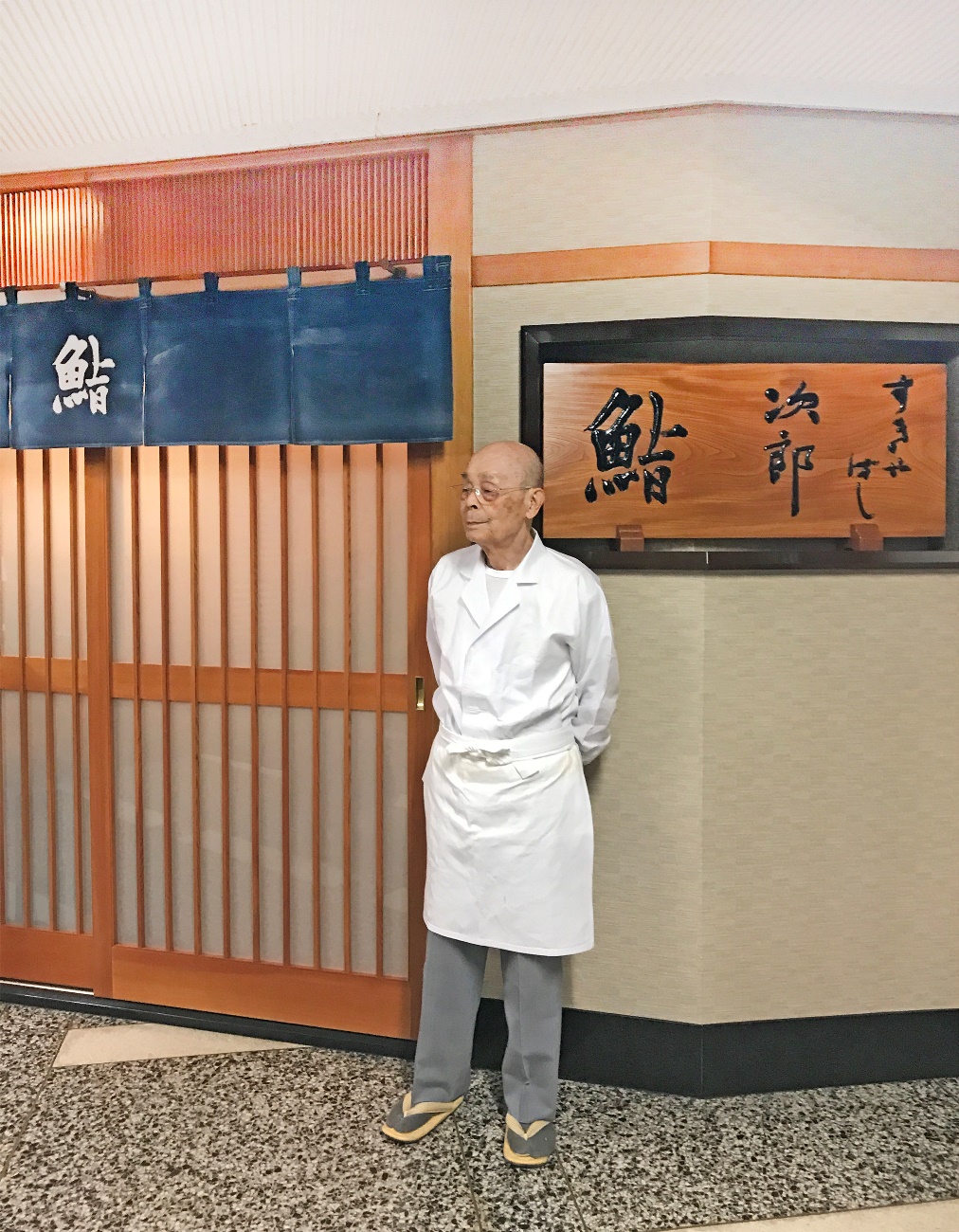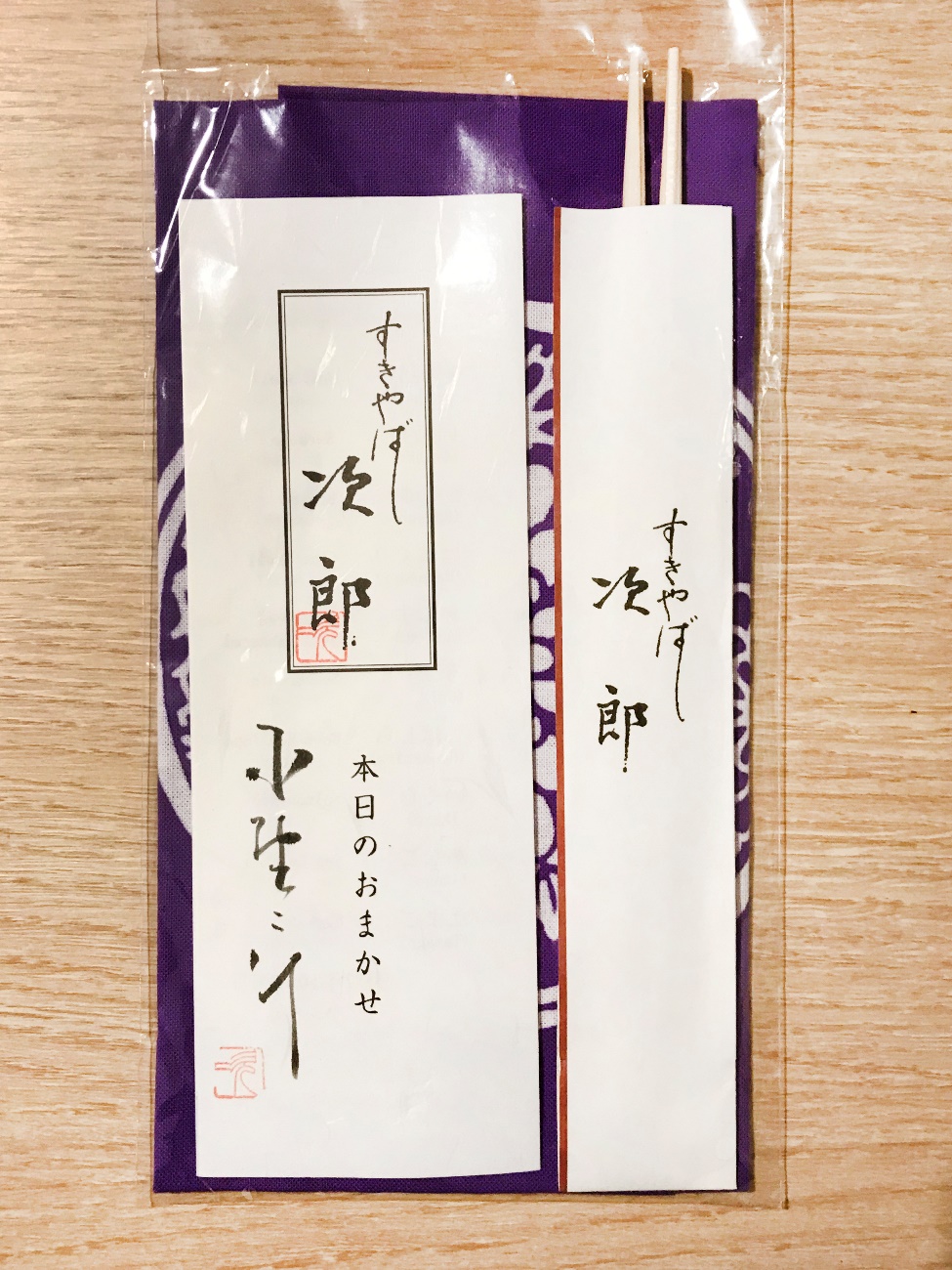WHAT IS THIS ABOUT? I finally relented and made a pilgrimage to Jiro! (My 100th Michelin 3-star restaurant, by the way!)
For most people, chef Jiro Ono will need no introduction. But, in case you don’t already know, this tiny place, situated at Ginza station, is run by 92-year old chef Jiro Ono, the oldest Michelin 3-star chef in the world, and still working in the kitchen every day. He’s the main subject of the movie “Jiro dreams of sushi”, a story about striving for perfection, which shows how something that seems to be very simple – sushi in this case – can actually be a very deep subject. In Japan, Jiro is seen as one of the country’s Crown Jewels, and places in his restaurant are constantly sought by the great and the good, including many A-list celebrities. He’s even played host to the US president! So you can probably understand that it wasn’t an easy booking to make – in fact, it was, without doubt, the most difficult reservation to make in my entire fine-dining career. As Jiro’s website always says it’s fully booked, pretty much the only way to make a reservation through a few exclusive 5-star hotels (and you need to be a guest first) or through an online concierge service (for which there’s a big-bucks fee too), and even that’s not guaranteed. For a place like Jiro, in such high demand, they know they can charge pretty well what they like and get away with it.
I have to admit that, over a decade of fine dining, I’ve done my best to avoid visiting avoid Jiro. Partly, this is because it’s so difficult to get a seat, so why bother – after all, there are lots of other great restaurants in the city. Also, it’s because I was unwilling to pay US$300+ (and that’s just the meal – the concierge fee for the booking is extra) simply to rush through 15 pieces of sushi in 20 minutes flat. I was also deterred by what seems to be a general consensus (judging by reviews I’ve read) that Jiro feels that foreigners don’t know how to appreciate his sushi, so he’s happy for them not to visit. However. . . after many visits to Tokyo and Jiro is getting on in years, my willpower finally succumbed to the attractions of the untried. In the words of the famous saying: “you’ll never regret the things you’ve done, as much as the things you haven’t done!”
HOW WAS THE EXPERIENCE? Be on time, no photos, and be prepared to swallow one sushi per minute!
As the (fully prepaid) reservation confirmation says that the establishment reserves the right to refuse late entry, I arrived a full 45 minutes early. At that time, a group of 8 Chinese women, all in their middle years, were just leaving after their meal. They were accompanied by a guide and translator, it was clear they were on some kind of exclusive package tour to include a reservation at this place! Before they left, they each had individual photo opportunities with Jiro, worshipping him as if he were sent from God. Some of them even prepared gifts for him! I couldn’t help thinking that this was a bit Over The Top – I doubt that they’d be that respectful about their own parents!
The restaurant then closed its doors for half an hour while I waited patiently. It was hard to resist the feeling that the place was just a huge money-making machine, with churn like a run-of-the-mill fast food place. Every 30 minutes they make another chunk of money. But I was being unfair in making that judgement, as I hadn’t yet had the meal – and I have to confess that I was also very excited too at the prospect of experiencing the best sushi meal!
While I waited for the place to open again, other diners started arriving (all Chinese again, from mainland but studying overseas). Then, finally, the doors opened and we were led to our assigned counter seat. Before we entered, the waitress pointed at the “No Photo” sign, and we all nodded in acknowledgement of its message. On our seats we found not just our name and seating plan, but also a menu, which consisted of a list of actually 20 pieces of sushi, both in Japanese and English. It seems that, over the years, Jiro has relented somewhat in his attitude to foreign visitors. Once we’d settled, the man himself appeared with his eldest son, who was to play a supporting role throughout the meal. His (Jiro’s) first action was to remind us to turn off our phones, to ensure that no photos were taken, which I thought was a little irritating and impolite. After all, we’d already agreed not to take photos, and we were unlikely to disobey the instruction as there are stories of Jiro refusing to serve people who had broken the rule. I didn’t want to be one of them!
The experience lasted almost exactly 30 minutes from beginning to end. Getting 20 pieces of sushi down me in about 20 min wasn’t particularly easy. Jiro’s son prepared the slices of fish while Jiro himself made the sushi. Every single piece of sushi was made by Jiro himself which I truly appreciated. It was a much better experience than at Sushi Shikon (a Michelin 3-star) in Hong Kong, where the sushi master chef did nothing other than simply monitor his staff making the sushi.
At this point, I began to have some sympathy with Jiro for not being happy with some foreign visitors, as – during my own visit – I think I was the only one who focused on the food the whole time. The others were having loud non-food related conversations that meant Jiro needed to prompt them to continue with their meal on a few occasions. It was, admittedly, a little distracting and disrespectful to say the least. It seemed as though all they wanted was a photo with Jiro at the end – which they got. He even signed each of our menus as a souvenir!
BUT HOW WAS THE SUSHI QUALITY? Just go to his second son’s branch at Roppongi. Easier to book, better quality, and half the price!
I really want to say that Jiro’s sushi is the best. It would be a great story to write. Sadly, though, I can’t. Right from the very beginning of the meal, I found the sole and the squid rather tough and a bit on the dry side. True, the o-toro was deliciously melt-in-the-mouth, but the sea urchin was too weak in flavour. Also, it seemed to me that too much vinaigrette had been used to cook the rice, as every piece of sushi left me with a sour taste in my mouth. More importantly, I didn’t feel that there was a good flavour progression in the meal. The fact that the abalone, for example, had a deep flavour but was served before the prawn (which had a more subtle) flavour is puzzling, and I can’t for the life of me see why the scallop was served near the end of the meal, after sea urchin! In fact, near the end, if Jiro hadn’t been standing just in front of me, I’d have ignored the rice and just eaten the fish, as so much acidity had accumulated in my mouth. I had to keep taking a little wasabi between sushi bites to clear my palate. Anyway, there’s no point in going on – I think I’ve highlighted enough flaws to suggest that this is not a place I’d either return to, or recommend.
As an aside, it’s worth noting that I decided to compare Jiro’s sushi to that of his second son, who has a (2-star) branch at Roppongi. I had a booking (easy!) the following day in order to compare them back to back. The result? Well, here is a detailed review, but in short, if you’re looking for decent sushi, you’re much better off going to the Roppongi branch. It has better tasting food, friendlier service – and half the price.
WHAT IS MY GENERAL VIEW OF SUSHI? Of course it’s not simple, but no need to over-complicating to the point of mystification.
I’ve heard many supporters of Jiro say something along the lines of: “If you don’t enjoy his sushi, it means you don’t understand his sushi!” I don’t want to get too deeply into that debate, but yes, of course you can talk about the texture and temperature of the rice, the freshness and thickness of the fish, what’s the right amount of rice for each sushi and what’s the best technique for making it. You can also claim, as some do, that it can take years of training to cook rice to perfection, and that every sushi chef has their own style. Or that sushi is a form of art, etc. But, let’s face it, you can make anything complicated and mysterious if you try hard enough. Moreover, I am sure any top sushi chef would consider all those details in making every piece of sushi. And what about chefs who had to master a wide range of cooking skills to deliver a high quality kaiseki meal for example?!
My view is that we’re in danger of over-complicating the sushi issue to the point of mystification. Which isn’t to say that I think good sushi is easy to make – of course it’s not. It’s a real skill. And I really appreciate the journey made by Chef Jiro, as depicted in the film mentioned earlier, to develop that skill, and to deliver a sushi as ‘perfect’ as possible. However, we need to remember that sushi began, historically, as places which had a purely practical purpose – to offer fast and easy ways to fill the stomach rather than a restaurant experience. From that perspective there’s an argument that Michelin didn’t really understand Japanese culture when they entered the market that sushi would even qualify as the kind of food deserving of a Michelin star. I mean, if they can award 3-stars to some sushi places, why don’t they start awarding 3-star to some pizzerias in Italy as well?







Charlie (NYC)
I found many restaurants in Japan are overrated. Those chef can charge ridiculous price because there are enough customers who treats those chefs like God! It’s a unique culture. These places stand no chance in the US.
V C (Edinburgh, UK)
Thank you for taking the time to compose this in-depth review. It was valuable.
Alan Spedding (Cumbria , UK)
Thank you for your honesty and a good review of this much overhyped industry. Beggars belief how a “Fish and rice” bar can even warrant a Michelin star let alone 3. A very poor and ridiculously priced dining trip which I will NEVER desire to experience.